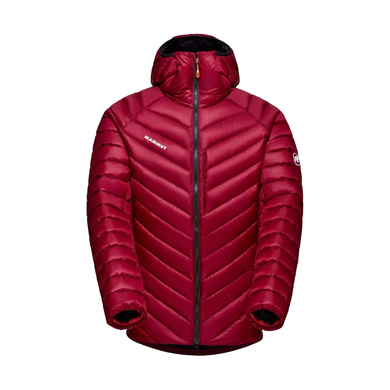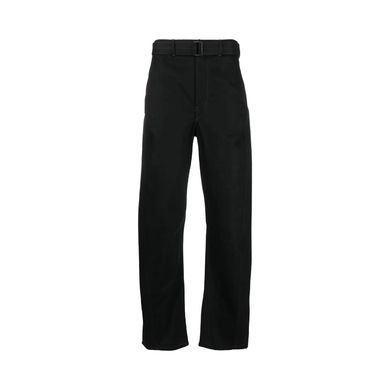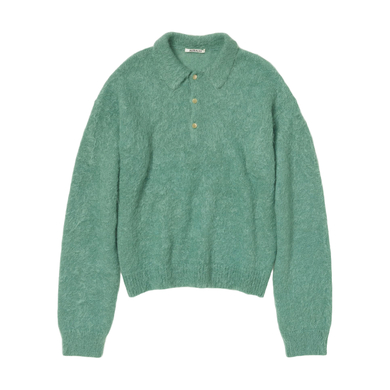When Phoebe Philo announced her return to the fashion world earlier this year, it generated an electric level of online chatter, not just in women’s-wear circles but also in the pages of GQ.
During her tenure at Celine, Philo gained some important male fans. After name-checking Philo in the opening salvo of his album My Beautiful Dark Twisted Fantasy, a bare-chested Kanye West wore a Celine blouse while performing at Coachella in 2011. Travis Scott was seen wearing the same silk blouse years later. And when Frank Ocean attended Paris Fashion Week in 2019, he was photographed carrying his dark-green leather Philo-era Céline bag while wearing an orange Mammut down jacket and an Arc’teryx beanie (this photo would later become a fixture on “gorpcore”—functional outdoor clothing—moodboards everywhere).

The interest in Philo’s new, eponymous label, which launched in late October, reflects a broader trend in fashion, where the border between men’s and women’s collections has become increasingly porous.
Much has already been written about the more visible challenges to traditional gender norms: male celebrities such as Harry Styles and Timothée Chalamet wearing lavender chiffon scarves, sequined lace jackets, and crimson backless halter tops. And there are now many more explicitly gender-neutral and inclusive brands, such as IJJI, Official Rebrand, Hirsuit Swim, Wildfang, and All We Remember.
But there has also been a broader shift in men’s wear, even among cisgender, heterosexual men, toward borrowing style cues from women’s wear. Brands such as Lemaire, Story mfg., and Olderbrother don’t describe their clothes as androgynous, but their men’s and women’s collections look nearly identical.
Indeed, Lemaire’s men’s and women’s collections share so many color palettes and silhouettes that male and female models are commonly photographed next to each other while wearing the same clothes. Just look at their drapey wrap overcoats and self-belted trousers with twisted outseams. While the cropped, rounded silhouette of their dispatch coat is a slightly feminized take on something that British military officers wore during World War II.

Like many high-fashion brands nowadays, AMI offers oversize tailoring, and while the style wouldn’t be unfamiliar in Armani’s 1980s collections, many men became interested in these looks after seeing them crop up first in women’s wear. Additionally, Auralee and De Bonne Facture fashion their men’s-wear knits from materials that were once primarily in the purview of women’s-wear collections, such as brushed mohair and nubby bouclés.
When Studio Nicholson, historically a women’s-wear label, introduced its first men’s collection in 2017, it transported many of the same silhouettes it used for its women’s line into its men’s-wear styles: balloon-cut trousers with a high waist and curvy legs, playfully oversize knits, and long, slouchy overcoats designed to be worn with chic side-zip boots. (Nearly identical clothes can be found in their women’s-wear section.)
Emily Adams Bode Aujla, the founder of Bode, has now won the C.F.D.A. Menswear Designer of the Year award twice creating men’s clothing using cuts and textiles historically coded for women. Her men’s-wear line includes campy shirts with delicate embroidery, French-lace tops in cropped cuts, and patchwork jackets and pants made from textiles that look like they could have been American quilts and coverlets (which the designer used when she started her brand).

Articles about her work don’t focus on gender but rather on how the clothes evoke nostalgia. “Her world, full of family history and records of forgotten artisanship, tends to stir up wistful memories,” Samuel Hine wrote in GQ, capturing the appeal of Bode for many. “You can perceive echoes of a romantic old way of living, of shared American mythologies, of Betsy Ross and Gee’s Bend, the crowded prewar Lower East Side, and serene summer nights in New England.” This is the triumph of breaking down gender norms: talking about clothes beyond what they mean for gender and instead just focusing on aesthetics.
To be sure, this is not the first challenge to gender norms through fashion, but such protests have typically occurred on the other side of the aisle. In the 1960s, second-wave feminists pushed back on the rigid gender stereotyping of the previous decade. They believed young girls were being lured into their subservient roles by first accepting gendered clothing expectations, so they rejected the idea that women should wear frilly dresses and only men could wear pants.
Diane Keaton’s use of men’s wear in the 1977 film Annie Hall has been a source of style inspiration for women since the film’s release. And in the 80s and 90s, women in the punk and grunge scenes thrifted the same plaid lumberjack flannels, black leather double riders, and ridge-soled combat boots as their male counterparts.



By comparison, male pushback has been limited. With some short-lived exceptions—such as London’s Peacock Revolution in the 1960s and America’s flower-power movement of the 70s, when long-haired men adopted floral shirts, beaded necklaces, and platform shoes—men have been more afraid to borrow clothes from women.
A recent exception to this is the early aughts, when fashion-conscious men—primarily white, indie-rock-listening hipsters living in coastal urban centers—bought women’s jeans because they couldn’t find anything skinny enough in the men’s-wear section. In 2011, Levi’s released a skinny-jean model for men that they controversially named the “Ex-Girlfriend” cut as a nod to those gender-defying men.
However, the new wave of male interest in women’s wear feels different from those of previous eras. While we’re living in a time when traditional gender norms are being challenged—an important context that has undoubtedly shaped fashion—the porous border between men’s and women’s fashion is not always a political statement.
Many men simply find inspiration in how women dress, and thus they incorporate certain elements into their wardrobes. There’s more comfort nowadays around men wearing jewelry, chunky scarves, and bouclé sweaters. Jill Wenger, who created Roucha after closing the influential women’s-wear boutique Totokaelo, is known for dressing women in drapey overcoats, oversize knits, and wide pants—a silhouette that has also slipped into men’s wardrobes.

In March of 1973, during the height of another gender revolution, feminist author Carolyn Gold Heilbrun wrote a New York Times article entitled “Androgynous World.” Many feel threatened by the word “androgyny,” Heilbrun noted, because “it suggests the unity rather than the necessary separation of what we have come to think of as masculine and feminine qualities.”
Androgyny doesn’t have to mean the elimination of all distinctions or that we’ll eventually be indistinguishably dressed like members of the Chinese Army, Heilbrun wrote. Instead, androgyny challenges us to think of masculinity and femininity as points along a spectrum rather than as a dichotomy. “We may even discover the gentleness of men, the forcefulness of women, and not be afraid,” wrote Heilbrun.
By paying attention to women’s wear, men have expanded, and will continue to expand, their fashion vocabulary, think beyond boundaries, and more fully express themselves.
Derek Guy writes about men’s style for Mr. Porter, Esquire, and Politico. He runs the men’s-style site Die, Workwear!











